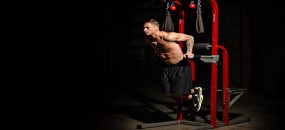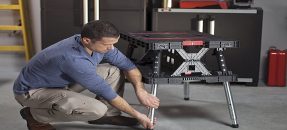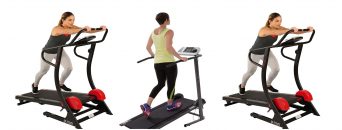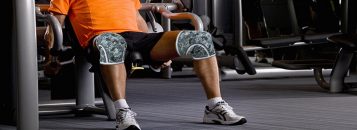Show Content
Do you want a better image quality than a smartphone? What if you just like the camera feeling in your palms? Ask a photographer whose camera style would give you better pictures, and they'll recommend a DSLR or mirrorless prototype, Still for many casual photographers, they're just too cumbersome and complicated for everyday usage. There are differences between a DSLR camera and point and shoot camera. And, if you're one of those people in the middle that's stuck, this post is for you.
Camera is a device to take pictures or to make movies or TV programs. You're not going to find cameras on this list with the newest and best technology, but they're all excellent buys that do everything you need them to do , such as the best point and shoot camera under 100-2000. Point and shoot lenses are more comfortable to manufacture and lighter than DSLR but do not have the same influence on the photographers' final appearance. The majority of its usage is instant. The cons of using DSLR are expensive, unnecessary accessories, noisy, ongoing maintenance, and care, etc. Point and shoot devices have such an extensive list of suggestions and functions comparable to earlier models. GPS, facial recognition, smile activation, and many other new technologies enter and target the market, over-saturate it with new cameras and make it harder for people to choose the correct camera for their needs
We recommend the top point cameras and shoot in the price range of under 100-2000 them, from simple and effective, hard, and durable, with bigger zooms or improved quality. We look at the camera's image quality output on the efficiency page.
Maybe you want a camera that directly produces high JPEGs, with no need for editing.
Best Point and Shoot Camera List
1
Nikon Coolpix A10

If you're set on an inexpensive compact as best point and shoot camera under 100-2000 , the Nikon Coolpix A10 is an excellent low-cost option, as long as you understand its limitations. It includes a 2.7-inch LCD screen, like many other versions in this price range, and with the focus on customer-friendly button design, it's a straightforward camera to use. Most of all, with just two generic AA batteries, you'll keep up and running, making it easy to catch up. Our advice is to plan to charge a little more on a good camera, around a few hundred bucks, if you just want a version that provides an excellent optical zoom scope.
Pros
Cons
2
Canon PowerShot Elph 190/ixus

Canon is well capable of delivering many of the most delicate point and shoot cameras with additional features and numerous settings. Canon point and shoot cameras offer excellent and reliable image quality. Canon PowerShot Elph 190/ixus is a popular budget option. The 190 is super-slim and compact, mixing a low price with a relatively generous feature set, and extremely easy to carry as a camera for backup or ride. Wi-Fi is fitted in almost all cameras listed here, so you can share photos while you are on the run. It's not as easy as a smartphone you'll have to upload those images you want to share to Instagram wirelessly but you'll still be able to let the world know that you're relaxed on a beach without first having to download pictures to a device. This is potentially one of the highest quality points and shoots you can consider
Pros
Cons
4
Sony CyberShot DSC-W830
Sony DSC-W830 is an 8x and 20-megapixel optical image stabilization point-and-shoot device with a 2.7-inch display and 720p HD video capabilities. As a point and shoot, certain aspects of larger cameras are absent, such as automatic exposure adjustment, but this device has scenery which senses acute auto sensitivity. Its W800 and W810 rivals produce nearly the same range of tools and technical requirements.
Pros
Cons
5
Nikon Coolpix A300
Nikon is a leading manufacturer with its imaging products that has made its niche around the world. With many apps, Nikon point and shoots are considered to give excellent picture quality without becoming too hard on your bags. The Nikon Coolpix A300's most significant selling points are the lightweight size, cost, and availability of various colors. The camera is also configured to be user-friendly with the front label "Easier to use." It provides a CCD sensor of 20.1 megapixels, lens-shift image stabilization (Vibration Reduction), and an image stabilization lens of 8x.
Pros
Cons
Things to Consider Before Purchasing the Best Point and Shoot Camera
Modern cameras are so complex and sophisticated that it's undoubtedly not a single-model-fit-all decision to buy one. Purchasing a camera is a major issue. Until dumping lots of money on something you'll be using for a while, there are just a few things to consider. Find out these camera tricks for buying the ultimate thing.

Price
Purchasing a camera is basically a very personal preference. To find the right one for you, I highly suggest exploring a shop and messing around with many models.
The Viewfinder
Some don't have viewfinders but instead have an LCD display to enable you set up a shot. Bigger LCD displays are more costly, but they give a better picture of your design. Most heavy-end compacts always have optical viewfinder that is useful when it is impossible to get an LCD display due to haze while writing under bright light.
Lenses
Another of the hybrid's biggest selling points are adjustable lenses. For near, broad-angle, range and other shots, you can get lenses. Before you purchase, make sure you understand which lenses are fully consistent with your camera. Overall, micro four thirds cameras have the largest range of options.
Manual Controls
The influence of automated camera settings is known to both professional and amateur photographers. To get the perfect shot, you should adjust your lens for focus, field depth, shutter speed and much more. These days, many cameras provide face recognition tools to help identify expressions in a scene of your objects. The lens detects the image-friendly face and locks concentration and exposure. Some cameras provide smiling face identification elements, like face detection , that automatically identify a face and take the picture when they smile.
Image Sensors
What expresses the brightness from the object you are going to shoot is the image sensor. Micro Four Thirds and APS-C are the two primary sensor dimensions for hybrids. The smaller Micro Four-Thirds detector is perfect for portability, but some image quality can be lost. You will find megapixels together with volume, or the amount Any amount will work for standard photo printing. Of pixels that the detector can collect. Usually, hybrids have between 14MP and 24MP. When you print big posters or do thorough photo editing, it's easier to have more megapixels. While the assumption is that more explicit pictures mean more megapixels, this is not necessarily the case. Sensor size has a more significant impact on your photo's visibility, especially in low-light situations. Try a point and shoot with a giant image detector if aiming in low-light conditions is a concern for you. If it is more necessary to have a good zoom, aim for something with a more unaffected sensor.
Wireless Connectivity
Most new point and shooting cameras now feature built-in Wi-Fi, providing a great way to manage pictures by linking to a Wi-Fi hotspot via social networking sites. On some devices, NFC (Near Field Communication) is a mechanism that lets them communicate directly to a mobile device for previewing and sharing images.
Conclusion
The primary point and click for shooting are better suited for those who are comfortable with auto settings. The features you may want to check in to when picking any specific point and shooting device are a high-quality lens, sufficient zoom range, face detection, beautiful sized LCD screen, and additional features such as face detection and Wi-Fi. Thanks to their functionality, Point and Shoots are perfect for casual, quick shooting, but you also want to strive into picture and video quality. Such cameras are designed to be shock-resistant, water-resistant, and weatherproof. There are many advantages to this type of camera, such as size, weight, fixed lease, price, massive depth of field as compared to digital cameras.
If you do not want to become a passionate cameraman, Point and Shooting is excellent. They're suitable for kids and cats and dogs ' fun snaps and the regular birthday party photos. They're perfect as a trip device when you first move as a tourist and snap a few pictures along the way. These do not take up any room in your bag and can be easily transported by aircraft and public transport. Several companies are offering high points of value and shooting cameras. Canon and Nikon are the leading companies that have produced the best point and shoots.Check out our top pick, "Nikon Coolpix A10" (CHECK BEST PRICE HERE)

















